It is true that there is currently no known cure for autism. Autism is a neurodevelopmental disorder that affects individuals in various ways, including difficulties with social interaction, communication, and repetitive behaviors. However, by understanding and addressing the unique needs of autistic children, it is possible to improve their quality of life and support their development significantly. Effective planning and following certain strategies can indeed make a significant difference for autistic children and their parents. Here are some tips that can be helpful in keeping the symptoms in check with effective home remedies for Autism.
Parents of children with Autism Spectrum Disorder (ASD) often find themselves overwhelmed by the amount of energy they must devote to helping their children manage their symptoms. Thankfully, the prevalence of autism in our society means that there are many resources out there for those who need a little help. While there is no true remedy for autism, planning for their special needs and following the tips below can dramatically improve the lives of autistic children and their parents.
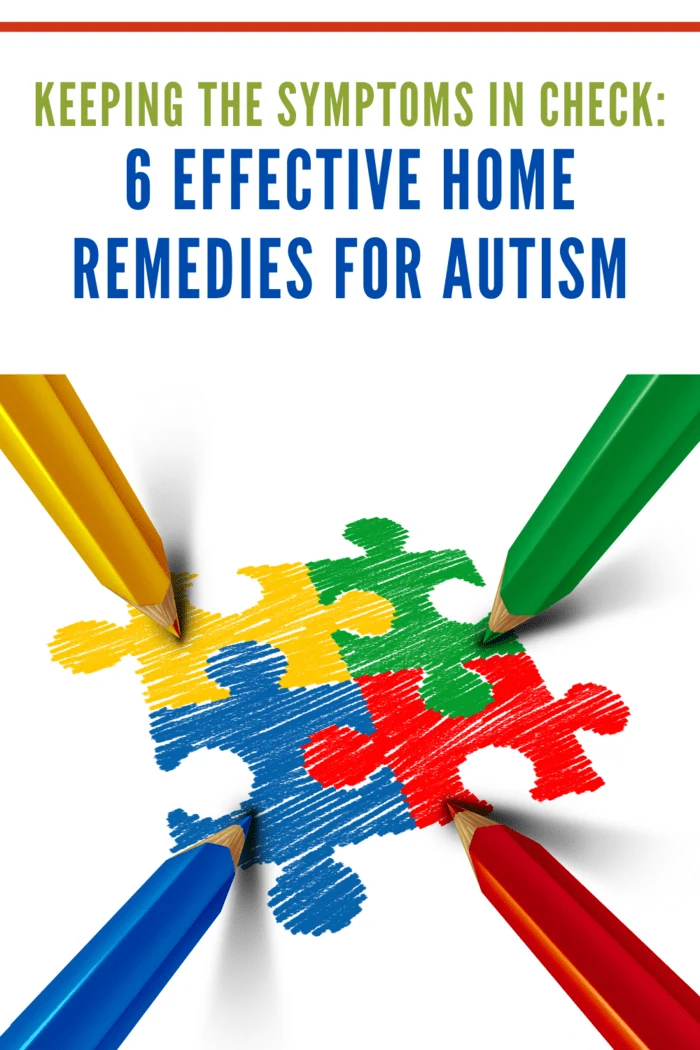
6 Effective Home Remedies for Autism
Give Kids Time to Transition
According to Autism Speaks, it is not uncommon for children with Autism Spectrum Disorder to behave unpredictably when transitioning from a preferred place or activity to a new one. The best way to avoid transitional tantrums is to set minute warnings on a phone or watch and explain to the child that when he or she hears that warning, it means it’s almost time to transition to a new task. Over time, minute warnings will become routine and offer a sense of security and control.
Giving children with autism time to transition can be an effective strategy to support their needs at home. Transitions can be challenging for individuals with autism due to difficulties with flexibility, changes in routine, and sensory sensitivities.
Here’s how providing adequate transition time can be helpful:
- Predictability and preparation: Autistic children often thrive in predictable environments. By providing a consistent routine and preparing them in advance for upcoming transitions, such as moving from one activity to another or leaving the house, you can help reduce anxiety and provide a sense of control. Use visual supports like schedules, timers, or social stories to communicate the upcoming transition and what to expect visually.
- Warning signals and cues: Many autistic children benefit from visual or auditory cues that signal an impending transition. These cues can act as warnings that a change is about to occur, allowing the child to prepare and adjust mentally. For example, using a countdown timer, a specific sound, or a visual cue like a picture or symbol can help signal that the current activity is about to end.
- Extended time for transition: Autistic children may need more time to process and adjust to changes. Providing them with extended transition time can alleviate stress and allow them to transition more smoothly. Be patient and avoid rushing them through the process. This extra time can help them mentally shift their focus, complete any necessary preparations, and adjust to the upcoming change.
- Visual supports: Visual supports, such as visual schedules or checklists, can effectively guide transitions. Use visual cues to outline the steps involved in the transition or to provide a visual representation of the new activity. This visual support can help the child understand the sequence of events and reduce uncertainty.
- Consistent communication: Clear and consistent communication is crucial during transitions. Use simple and concise language to explain what is happening and what is expected of the child. Offer reassurance and positive reinforcement for successful transitions, which can help motivate and reinforce desired behavior.
- Sensory considerations: Consider any sensory sensitivities your child may have. Transitions can involve changes in sensory input, such as moving from a quiet space to a noisy environment or from a familiar setting to a new location. Being aware of their sensory needs and making adjustments, such as providing noise-cancelling headphones or allowing sensory breaks, can help ease the transition process.
- Flexibility and understanding: It’s important to be flexible and understanding when supporting transitions for autistic children. They may have unique preferences or strategies that help them cope with changes. Observing and respecting their individual needs and adapting your approach accordingly can foster a more positive and successful transition experience.
By incorporating these strategies and giving children with autism the time and support they need to transition, you can help minimize stress, promote a sense of control, and enhance their overall well-being at home.
Create a Safe, Private Space
After spending a long day out doing stressful errands, most people like to relax and enjoy a feeling of comfort and security in their homes. Your child can also benefit from having a private space where he or she feels safe. Use visual cues such as colorful tape or picture labels when creating and explaining the use of that space to your child.
Providing a child with autism a safe and private place at home can effectively support their well-being and help them cope with the challenges they may face.
Here’s how it can be beneficial:
- Sensory regulation: Many individuals with autism have sensory sensitivities and may become overwhelmed by certain stimuli in their environment. Having a safe and private space allows them to retreat to a calm and controlled environment where they can regulate their sensory experiences. This can include controlling noise levels, lighting, and other sensory inputs to create a more soothing and comfortable environment.
- Emotional regulation: Autistic children may experience difficulties with emotional regulation, and a private space can provide them with a refuge to manage and express their emotions. It allows them to have a space where they feel secure and can engage in self-regulation strategies such as deep breathing, using sensory tools, or engaging in preferred activities that help them calm down and regain emotional balance.
- Reduced sensory overload: Being in a safe and private space can help minimize external distractions and sensory overload that can be overwhelming for autistic children. This can be particularly helpful during times of heightened stress, anxiety, or when they need a break from social interactions. Having a dedicated space where they can retreat to and find solitude can help them recharge and regain their focus.
- Self-expression and interests: A private space can serve as a haven for self-expression and pursuing personal interests. Autistic individuals often have unique passions and preferences, and having a designated area allows them to engage in activities they enjoy without judgment or interruption. This can be particularly valuable for engaging in special interests or engaging in activities that promote their strengths and talents.
- Personalized environment: Creating a safe and private space tailored to the child’s needs and preferences can provide them with a sense of ownership and control. Involve the child in designing and organizing the space, taking into consideration their sensory preferences, favorite objects, and activities. Personalizing the environment can enhance their sense of comfort, security, and autonomy.
- Social retreat: While social interactions can be challenging for some autistic children, having a private space does not necessarily mean complete isolation. It can also serve as a retreat where they can invite trusted individuals, such as family members or close friends, who understand and respect their boundaries. This allows for social interactions in a controlled and comfortable setting, reducing the pressure of navigating social situations in more public areas of the home.
Remember that the design and use of a safe and private space may vary depending on the specific needs and preferences of the child. It’s important to communicate and collaborate with the child to understand their unique requirements and create an environment that best supports their well-being.
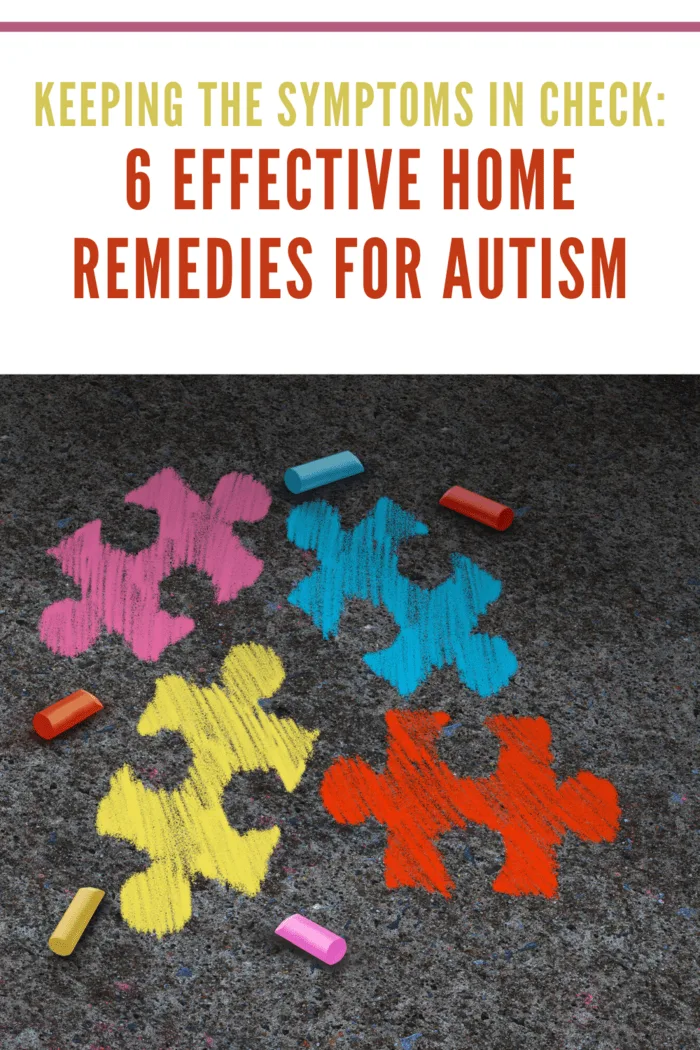
Buy a Weighted Blanket
Weighted blankets can be very comforting to children with ASD. If your child is having trouble calming down, the grounding offered by a weighted blanket can help reduce cortisol levels in his or her brain, making it possible to control that anxiety.
According to Parenting Pod, a weighted blanket can help with anxiety and ASD to find one that will be a good fit.
A weighted blanket can be an effective home remedy for individuals with autism for several reasons.
Here’s how a weighted blanket can potentially benefit them:
- Sensory regulation: Many individuals with autism have sensory processing differences and may seek or avoid certain types of sensory input. The deep pressure provided by a weighted blanket can offer a calming and regulating effect on the sensory system. The gentle, evenly distributed weight of the blanket can provide a comforting sensation, similar to a warm hug or gentle pressure touch, which can help soothe and organize sensory input.
- Anxiety and stress reduction: Individuals with autism may experience heightened levels of anxiety and stress due to challenges with communication, social interactions, and sensory sensitivities. The deep pressure stimulation from a weighted blanket can have an anxiety-reducing effect by promoting the release of neurotransmitters like serotonin, which can induce feelings of relaxation and well-being. This can help to reduce anxiety and promote a sense of calm.
- Sleep improvement: Many individuals with autism experience sleep difficulties, including difficulties falling asleep or staying asleep throughout the night. The use of a weighted blanket can potentially promote better sleep by providing a sense of security and comfort. The deep pressure can help regulate the sleep-wake cycle and promote a deeper, more restful sleep, leading to improved sleep patterns and overall well-being.
- Focus and attention: Some individuals with autism may experience challenges with attention and focus, which can affect their ability to engage in tasks or learning activities. The gentle, constant pressure provided by a weighted blanket can help promote a sense of grounding and increase body awareness. This can potentially enhance focus and attention by reducing distractions and improving sensory regulation, enabling better engagement in tasks.
- Self-regulation and emotional comfort: Weighted blankets can serve as a self-regulation tool for individuals with autism. They can be used as a coping mechanism or a comfort item during times of stress, anxiety, or sensory overload. The presence of a weighted blanket can provide a predictable and calming stimulus, helping to regulate emotions and providing a sense of security and comfort.
It’s important to note that the use of a weighted blanket may not be suitable for everyone, and individual preferences and sensitivities should be considered. It’s recommended to consult with occupational therapists or healthcare professionals experienced in working with individuals with autism to determine the appropriateness and optimal use of a weighted blanket based on the individual’s specific needs and sensory profile.
How Heavy Should a Weighted Blanket Be?
When choosing the correct size for a child, it is even more important how heavy should a weighted blanket be.
The weight of a weighted blanket should be determined based on the individual’s body weight. As a general guideline, it is often recommended to choose a weighted blanket that is about 10% of the person’s body weight. However, this can vary depending on personal preferences and sensory needs.
For example:
- For a person weighing 50 pounds (22.7 kg), a weighted blanket around 5 pounds (2.3 kg) may be appropriate.
- For a person weighing 100 pounds (45.4 kg), a weighted blanket around 10 pounds (4.5 kg) may be suitable.
- For a person weighing 150 pounds (68 kg), a weighted blanket around 15 pounds (6.8 kg) may be suitable.
It’s important to consider the individual’s comfort and sensory preferences when selecting the weight of a weighted blanket. Some individuals may prefer a slightly heavier or lighter blanket based on their sensory needs and personal preference.
Additionally, it’s advisable to consult with a healthcare professional or occupational therapist who has experience working with individuals with sensory processing differences or autism. They can provide personalized recommendations based on the individual’s specific needs and help ensure the weighted blanket is used safely and effectively.
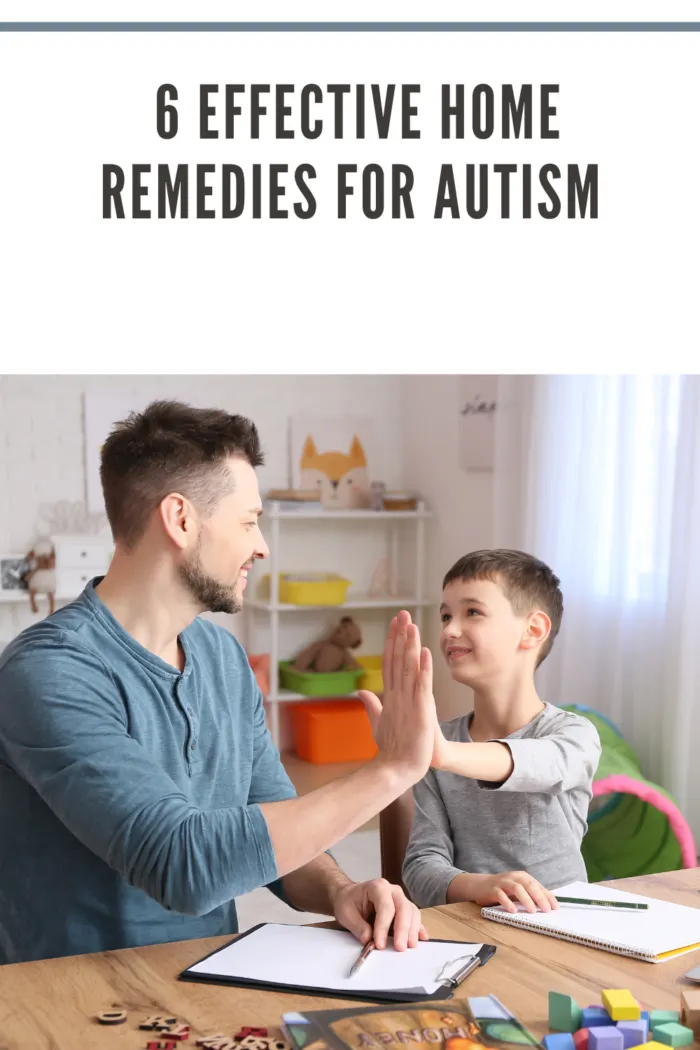
Learn About Nonverbal Communication
It isn’t surprising that children with ASD often become frustrated or frightened, given that they often have difficulty communicating their emotions and experiences verbally. If you pay attention, you’ll almost certainly find that your child is using other means of communication such as facial expressions and gestures. If you can learn to decipher these nonverbal cues, you can use them to predict your child’s responses and interpret his or her needs, making it much easier to cope with symptoms.
Learning about nonverbal communication can be a valuable tool for understanding and effectively interacting with individuals with autism.
Here are some steps you can take to learn more about nonverbal communication as a home remedy for treating autism:
- Read books and online resources: Start by exploring books, articles, and reputable online resources that focus on nonverbal communication in individuals with autism. Look for resources written by experts in the field, including researchers, therapists, and individuals with lived experiences. These resources can provide insights into nonverbal cues, body language, and communication strategies specific to autism.
- Attend workshops or training sessions: Look for workshops, training sessions, or webinars that specifically address nonverbal communication in autism. These educational opportunities may be available through local autism organizations, support groups, or professional development programs. Attending such sessions can provide practical strategies, examples, and opportunities for hands-on learning.
- Consult with professionals: Reach out to professionals who specialize in working with individuals with autism, such as speech-language pathologists, occupational therapists, or behavior analysts. They can offer guidance and resources on nonverbal communication techniques tailored to the needs of individuals with autism. Consider seeking their expertise and recommendations to further your understanding.
- Observe and learn from individuals with autism: Take the time to observe and learn from individuals with autism. Pay attention to their nonverbal cues, body language, and communication preferences. Each person may have unique ways of expressing themselves nonverbally, and understanding their specific cues can greatly enhance communication. Be respectful and considerate in your observations, ensuring you obtain consent from individuals and their families if applicable.
- Practice active listening and observation: Improve your own skills by practicing active listening and observation. This involves being fully present during conversations or interactions, paying attention to the nonverbal cues of the person with autism, and responding in a supportive and understanding manner. By actively listening and observing, you can better understand their needs, emotions, and communication attempts.
- Seek input and feedback: If possible, engage in conversations with individuals with autism and their families. Ask about their experiences, challenges, and strategies they find helpful in nonverbal communication. Their insights can provide valuable firsthand knowledge and help you develop a deeper understanding of nonverbal communication in the context of autism.
Remember, nonverbal communication can vary widely among individuals with autism, so it’s important to approach each person as an individual and be open to learning from their unique experiences. Patience, empathy, and ongoing learning are key to developing effective communication skills and building meaningful connections with individuals on the autism spectrum.

Use First/Then Statements
Whether your child is verbal or nonverbal, the way that you construct your own sentences can make a big difference in how they are received. Autistic children often act out when they are unable to get what they want right at the moment, but it is often easier than you would think to avoid these tantrums. Try explaining situations using a first/then statement (Autism Speaks) in which the child has to complete a task first, then he or she will be able to have that desire fulfilled.
Using first/then statements can be an effective strategy to support individuals with autism at home.
Here’s how you can utilize first/then statements as a home remedy:
- Clear communication: First/then statements provide a clear and concise way to communicate expectations and sequences of activities. The structure helps individuals with autism understand what needs to be done and what will follow as a reward or transition.
- Visual supports: Use visual supports alongside verbal statements to reinforce understanding. This can include written or picture-based schedules or visual aids that depict the desired activities. Visual supports provide a concrete representation of the first/then statement and aid comprehension.
- Individualize and personalize: Tailor the first/then statements to the specific needs and preferences of the individual. Consider their interests, sensory sensitivities, and strengths when designing the sequence. This personalization can enhance motivation and engagement.
- Break tasks into smaller steps: If a task or activity seems overwhelming or complex, break it down into smaller, more manageable steps. Present each step using a first/then statement to provide a clear roadmap for the individual to follow.
- Positive reinforcement: Utilize the “then” portion of the first/then statement as a positive reinforcement or reward for completing the “first” activity. The “then” activity can be something enjoyable or preferred by the individual. This positive reinforcement can help motivate and increase compliance.
- Consistency and predictability: Maintain consistency in using first/then statements across different situations and activities. Consistency helps individuals with autism understand and anticipate expectations, promoting a sense of predictability and reducing anxiety.
- Gradual fading: Over time, you can gradually fade the use of first/then statements as individuals become more familiar with routines and expectations. As they become more independent and comfortable with transitions, you can begin to rely less on the explicit use of the statement while still maintaining clear communication.
- Reinforce with visuals and gestures: Along with verbal statements, reinforce first/then statements with gestures or physical cues. Pointing to visual supports, using hand gestures, or incorporating visual cues through sign language can further enhance understanding and support comprehension.
Remember, each individual with autism is unique, so it’s important to adapt and customize your approach based on their specific needs and communication style. Observe and listen to the individual, be flexible, and adjust your strategies as necessary to effectively implement first/then statements as a home remedy for autism.
What are some First/Then Statements?
Here are some examples of first/then statements that can be used with individuals with autism:
- “First finish your homework, then you can play your favorite game.”
- “First put on your shoes, then we can go to the park.”
- “First brush your teeth, then we can read your favorite story.”
- “First eat your vegetables, then you can have dessert.”
- “First finish your chores, then you can have screen time.”
- “First take a bath, then we can have dinner.”
- “First clean up your toys, then we can go for a bike ride.”
- “First complete your math worksheet, then we can do an art activity.”
- “First put away your clothes, then you can watch a movie.”
- “First finish your appointment, then we can go to the ice cream shop.”
Remember, the activities in the “first” part of the statement should be less preferred or less preferred by the individual, while the “then” part should be a preferred or motivating activity. Tailor the statements to the specific interests and preferences of the individual to enhance their motivation and engagement. Additionally, combining the statements with visual supports, such as pictures or written schedules, can further reinforce understanding and provide a visual reference for the sequence of activities.
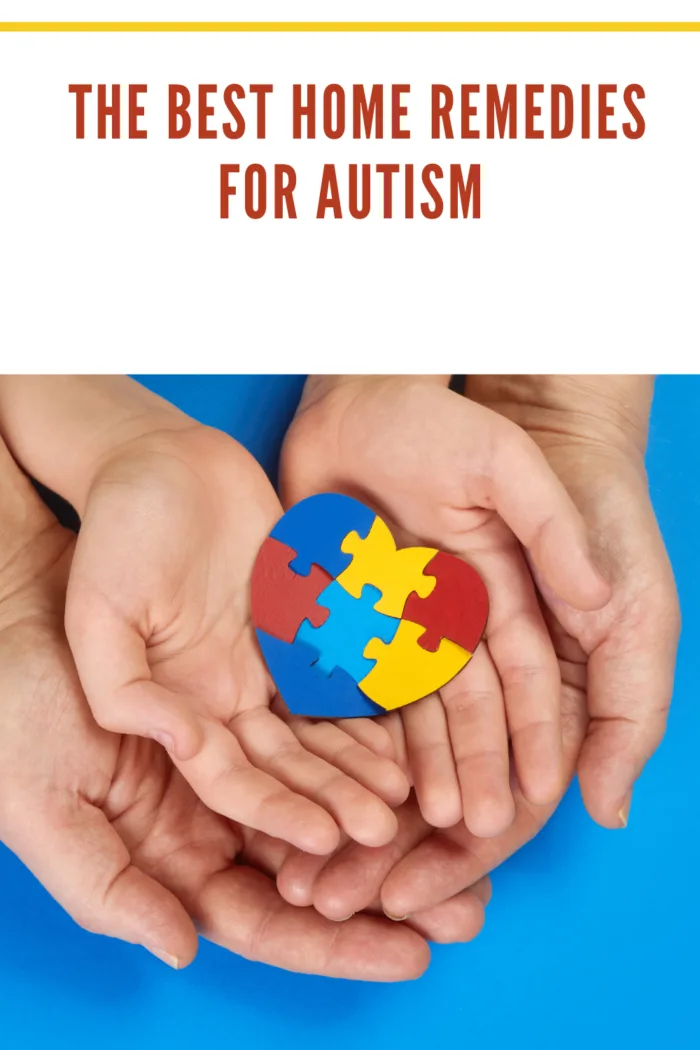
Make Time for Fun
Coping with ASD is even more stressful for children than for their parents. Set aside scheduled playtime during those hours of the day that the child is most alert. Make a point of choosing activities that are not specifically therapeutic or educational so that the child doesn’t feel pressured and the tasks don’t feel like work.
Making time for fun activities can be an effective home remedy for individuals with autism in several ways:
- Promotes enjoyment and happiness: Engaging in enjoyable activities can bring happiness and joy to individuals with autism. Fun activities provide opportunities for positive experiences, allowing them to experience pleasure and a sense of well-being. This can contribute to overall emotional and mental well-being.
- Enhances social interaction and communication: Participating in fun activities can create opportunities for social interaction and communication. Fun activities often involve engaging with others, whether it’s playing a game, participating in a shared hobby, or enjoying leisure activities together. These interactions can promote social skills development, such as turn-taking, sharing, and cooperative play.
- Reduces stress and anxiety: Fun activities can serve as a form of stress relief and help reduce anxiety levels in individuals with autism. Engaging in enjoyable and relaxing activities can provide a sense of calm and distraction from stressors. It can also serve as a healthy outlet for emotional expression and provide a break from the challenges and demands of daily life.
- Stimulates creativity and imagination: Many fun activities encourage creativity and imagination. Art projects, imaginative play, music, and storytelling can all foster creative thinking and self-expression. These activities can be particularly beneficial for individuals with autism who may have unique strengths and talents in these areas.
- Builds self-esteem and confidence: Success and enjoyment in fun activities can boost self-esteem and confidence in individuals with autism. Engaging in activities they enjoy and excel in can provide a sense of accomplishment and pride. It allows them to recognize and appreciate their own abilities, leading to improved self-confidence and self-perception.
- Provides a structured routine and predictability: Incorporating fun activities into a daily routine can provide structure and predictability for individuals with autism. Having planned times for enjoyable activities can create a sense of stability and provide a positive framework for the day. This predictability can be reassuring and help individuals feel more secure and grounded.
- Supports skill development: Fun activities can also be designed to target specific skill development areas. For example, engaging in sensory activities can support sensory integration skills, while playing board games can promote turn-taking and social communication skills. By selecting fun activities that align with specific skill goals, individuals with autism can engage in enjoyable experiences while also working on their areas of growth.
Remember to consider the individual’s interests, preferences, and sensory sensitivities when planning fun activities. Adapting activities to their unique needs and providing necessary supports or modifications can maximize the benefits and enjoyment they derive from these experiences.
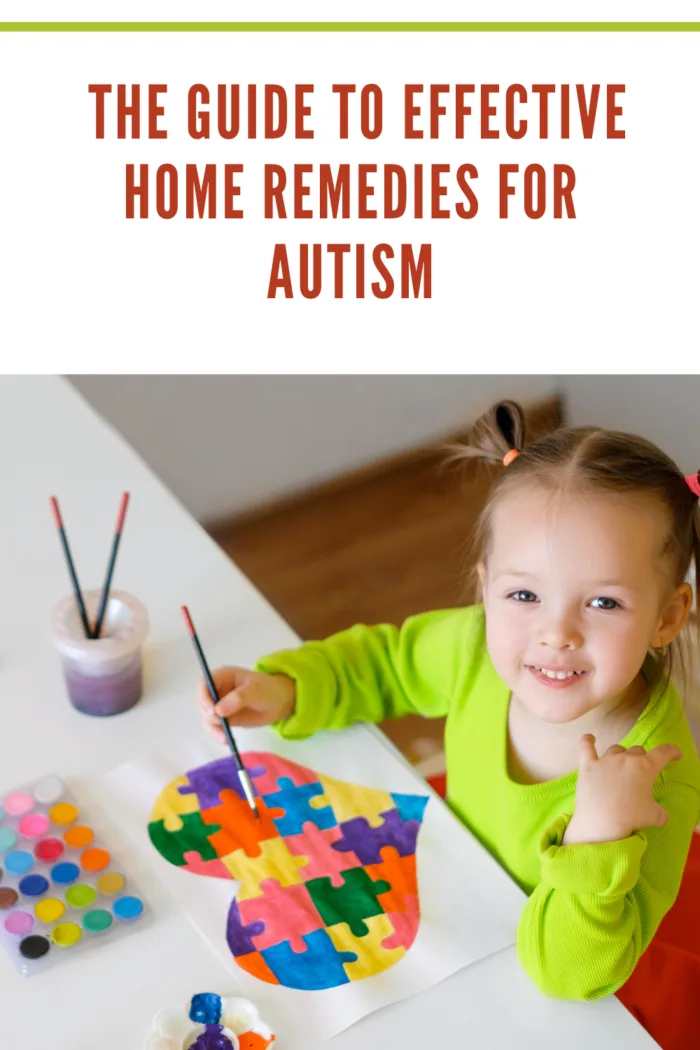
The Bottom Line
While there is no known cure for autism, there are plenty of ways that parents can help their children control the symptoms of ASD. These Effective Home Remedies for Autism tips above are just a start. Give them a try, but don’t be afraid to enlist professional help if you still feel overwhelmed. You may want to learn more about Diagnosing Infants: Early Signs of Autism in Infants
